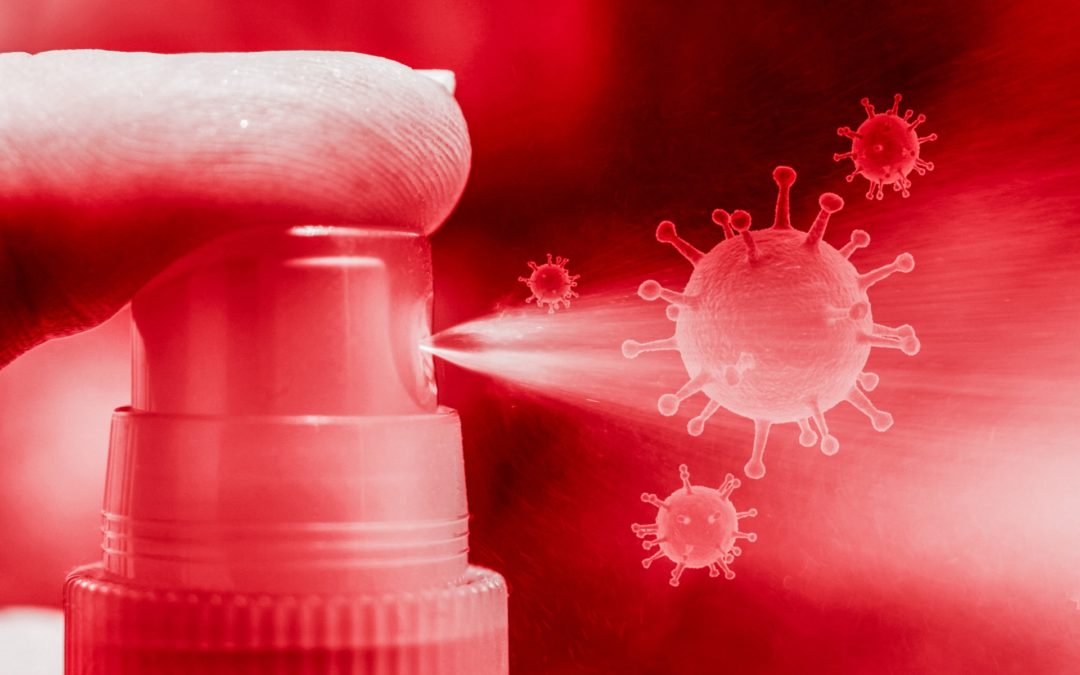As children return to classes and businesses reopen, we’ve received a lot of questions about COVID19 and proper sanitization. There’s a consistent amount of confusion, too, specifically about what will and won’t disinfect this virus. Now, we actually released a video on this topic earlier this year. (You can check that out by following this link.)
However, considering the relevance of the subject, we’re going to revisit some of those points. Of course, we can’t discuss this pandemic without mentioning the CDC and the EPA. They are the USA’s most current and accurate authorities on COVID19, including best practices, data, and safety precautions. As such, while we strive to keep our website up-to-date and will release future blogs when applicable, it would be irresponsible not to refer you to these organizations.
That being said, we want you to know that we strictly follow the recommendations and guidelines of both the CDC and the EPA. We also make it our prerogative to ensure the information we disseminate is scientifically supported and backed by reputable sources.
What Is COVID19?
As you probably know by now, COVID19 refers to a novel form of Coronavirus, one we’ve never seen before. However, just because it’s new doesn’t mean we’re totally in the dark. In fact, scientists have studied Coronaviruses for decades. That’s good because even though this one is unique and there isn’t an available vaccine, it means we know how to neutralize this type of virus outside of human hosts.
You see, these pathogens belong to a family of envelope viruses. In other words, they have a lipid membrane (a fatty barrier) that surrounds and protects them. That lipid membrane contains both hydrophilic (attracting water) and hydrophobic (repelling water) molecules.
There are already plenty of cleansers that can interact with that type of barrier. In essence, they wiggle between the molecular bonds, deteriorate the membrane, and stop the virus from multiplying or attaching to its host cell. However, that process takes time. How much depends on each cleanser, so be sure to follow the directions for whichever method you employ.
What Cleaners Should I Use for COVID19?
When AEI Decon sanitizes a property, we always attack the pathogen with at least three mechanisms. That’s our triple treatment protocol. Of course, any of those treatments is effective on its own. However, by applying all three, we ensure better disinfection to the entire space. That makes us an excellent option for anyone concerned with COVID19 and full-scale sanitization.
Examples of When to Consider Full-Scale Sanitization
- We recommend full-scale sanitization anytime there is a confirmed case of COVID19 in your home, business, or other property
- When there is a confirmed case of COVID19 in any public space you manage
- As part of regular maintenance for businesses and public spaces during an active pandemic
- Before and after indoor events or gatherings, especially where social distancing is difficult to maintain
- And before returning an infant (or any person in a high-risk category) to a home or environment with a history of high social traffic
Please note that this is not a comprehensive list, nor a guarantee of COVID19 prevention. There may be other scenarios that justify full-scale sanitization.
Additionally, this pathogen can still spread from person-to-person or reinfect a space after disinfection. This is especially true if you do not use other preventative measures. However, with appropriate caution, such as social distancing protocols and requiring the use of masks, sanitization can help reduce the spread of viruses. (And on that note, please be aware that the CDC urges its readers to take follow all local regulations when planning an event or entering a public space.)
For those situations where full-scale sanitization isn’t necessary, such as general cleaning for your home or car, you can use an EPA N list disinfectant. You probably have a few of these options in your cleaning cupboard already: alcohol, bleach, and hydrogen peroxide to name a few.
Hand Washing and COVID19
Before we wrap up the conversation on COVID19 and sanitization, we need to touch on hand washing. (No pun intended.) One of the important things to know here is that soap and cleansers are different materials.
Soap is a detergent, a salt with a hydrocarbon chain. It works through different mechanisms than sanitization agents. That is to say, it doesn’t neutralize the virus. It does, however, break down surface tension on your hands and forms micelles (you can think of these as bubbles) around germs and viruses. That allows you to rinse or scrub the pathogens off of your hands. This process requires vigorous scrubbing, though, and for at least twenty seconds. (All those handwashing memes should hopefully make a bit more sense now.)
Our hands are routes to infection. They spread disease, and give it a quick path straight into our mouths. That is why clean hands are critical to preventing the spread of COVID19. So please, don’t neglect this first line of protection for you and your environment. And to learn more about masks, feel free to watch our video on Masks For Microbial Protection.
However, if hand washing and preventative measures should fail – and you do have a case of COVID19 inside your property, remember that we can help. We offer disinfection and sanitization to the state of Utah, and professional consultation to those outside our service boundaries. Give us a call, and we can talk about your options, containment, and our triple treatment protocol. (801) 888-6698.
Image by mohamed Hassan from Pixabay

